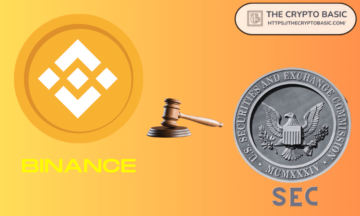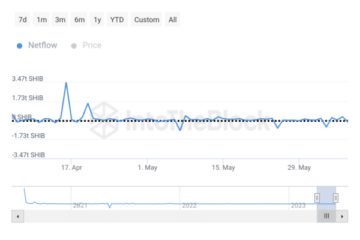
Maximal Extractable Value is closely associated with the Ethereum network, but in fact it can be problematic for any blockchain platform.
Known in industry parlance as MEV, the term refers to the additional value that can be extracted by block validators, or those who are responsible for creating new blocks of processed transactions that are immutably stored on the blockchain.
MEV can be obtained by manipulating the order in which transactions are processed. In many cases, block producers will sequence transactions in a way that enhances their profits, and this practice often has a negative impact on other network users. There are many methods for doing this, including front-running attacks and sandwich attacks.
The Dangers Of MEV
For regular blockchain users, the main risk associated with MEV is known as “front-running”, where block producers front-run a significantly-sized buy order that’s pending in the mempool with one of their own transactions. They’ll insert a similar buy order ahead of that transaction to purchase that asset at a more favorable price. Once their order goes through, and then the other large buy order is processed, it can significantly increase the value of the underlying asset. The front-runner can then sell the asset at a substantial profit.
A related strategy is known as “sandwiching”, which is when the block producer places a buy order before, and a sell order after, a significant price-moving transaction. This enables them to benefit from the price pressure on both sides. Both of these strategies are considered to be malicious, because they extract value from innocent network users.
The State Of MEV Today
Concerns over MEV were first raised at the time Ethereum was still being developed as the world’s first smart contract blockchain. MEV has consequently become closely associated with Ethereum, which relied on a proof-of-work consensus mechanism when it was launched. At that time, it was only miners who had the power to reorder and exclude certain transactions to obtain extra value.
As such, the term was originally known as “Miner Extractable Value”. However, with Ethereum undergoing “the merge” upgrade in September 2022, it switched from the PoW consensus mechanism to a Proof-of-Stake algorithm, meaning it’s no longer miners that create new blocks.
– Advertisement –
However, the switch didn’t do anything to stop MEV. Rather, it just means that the door is open to other participants – such as validators – to participate in MEV instead. With this transition, many have come to refer to MEV as “Maximal Extractable Value” instead.
It’s fair to assume that the main beneficiaries of MEV are block producers, but actually almost anyone can – and does – participate in this process. In fact, it’s believed that the majority of the extracted value ends up not in the hands of block creators these days, but rather the “searchers”, who are dedicated individuals that use special software to analyze blockchain transactions sitting in the mempool (where they wait to be processed) to seek out profitable MEV opportunities. They then look to collaborate with block producers to share in the spoils.
Why Is MEV Still A Problem?
Although MEV has been known about for a long time, since before Ethereum even launched, the decentralized ethos of blockchain has prevented the industry from coming up with a comprehensive fix. To strip block producers of the right to sequence transactions as they desire would go against the industry’s commitment to decentralization, which means a more technical solution is required.
Numerous teams have been working for years to create solutions to MEV, and they have had some success. For instance, in May 2021, Ethereum miners were reported to have extracted around $140 million in MEV in just 30 days. However, the amount extracted from users in the last 30 days, as of May 10, 2024, has fallen to just $2.4 million, according to data from Flashbots.
Ethereum is the main target for MEV techniques because it frequently suffers from network congestion, which means slow block times and higher fees. In addition, it has the industry’s most extensive and mature DeFi ecosystem, which means it processes lots of complex transactions that can maximize the profit-making opportunities for those who engage in MEV.
The bulk of MEV losses stem from DeFi protocols such as Uniswap, Aave and Compound, which are also targeted by a phenomenon known as “liquidation front-running”, where searchers attempt to find and execute liquidation transactions to secure a part of the liquidator fee, which provides a big discount on the collateral.
How Is The Industry Fighting MEV?
As awareness of the dangers of MEV grows, so do the strategies being implemented by the industry to prevent it from taking place.
One approach that appears to have had a lot of success is the use of Fair Sequencing Services or FSS. This refers to a decentralized transaction ordering service that aims to ensure absolute fairness in the way transactions are ordered, eliminating the opportunity for MEV attacks. FSS is generally applied in Layer-2 rollups such as Arbitrum, enabling smart contract-based economics to scale while minimizing the consequences of MEV on individual users.
An alternative idea is Flashbots, which is a blockchain research organization that has devised a transparent marketplace for MEV extraction. In essence, it enables searchers to send bundles of transactions directly to block producers, reducing the harmful impact of things such as gas price auctions to achieve more efficient MEV extraction. With Flashbots, block producers are prevented from being able to obtain an inordinate amount of influence. It enables any participant to extract MEV via the mev-geth client. It provides all participants, irrespective of their blockchain knowledge, to survey Ethereum’s mempool and identify MEV opportunities, so they can reorder their blocks in the most profitable way.
A more extreme and efficient solution might be Fully Homomorphic Encryption, which introduces full encryption to blockchain data, obscuring transaction participants and amounts from the process. By introducing fully confidential transactions, Fhenix aims to eliminate the opportunity for MEV completely. The block producers will no longer be able to see any transaction details, which prevents them from being able to manipulate the order in which transactions are processed. It creates a much fairer environment for blockchain users, preserving the network’s integrity.
The beauty of Fhenix’s FHE solution is that it enables computations to be performed on encrypted data without that information being decrypted first. This means it can even be used with the complex smart contracts that facilitate multi-step transactions in DeFi.
The elimination of MEV will result in big benefits for the blockchain community. First and foremost, it prevents anyone from carrying out front-running and other kinds of exploitative moves that unfairly extract value from other network participants. In this way, FHE provides a strong guarantee with regard to transaction fairness. Because block producers cannot see any transaction data, they instead process transactions according to the network’s rules, rather than using their discretion. In addition, it also prevents block producers from being able to censor transactions by certain users.
Final Thoughts
MEV might not be such a big problem today as it was, but the threat remains real. It provides an unfair advantage to those who engage in it, and it can still have enormous negative implications for some users, especially traders who make large volume transactions.
Some continue to argue that MEV benefits blockchain ecosystems by ironing out inefficiencies in the way transactions are processed, helping to speed up the network overall. For instance, when MEV searchers race to capture value from arbitrage opportunities, their actions will quickly result in price corrections across the DEX ecosystem. Similarly, lending protocols benefit from more rapid liquidations in the event of a loan default. As searchers race to cash in on the liquidation event, it prevents the collateralization level of the defaulted loan from becoming too unbalanced.
Despite these benefits, the unfairness of MEV remains acute. Front-running and sandwich attacks almost always result in bad outcomes for regular network users, who are required to overpay their transaction fees and execute their trades at disadvantageous rates, suffering from significant slippage. In addition, MEV also leads to higher gas fees and slower transaction processing, as the intense competition among searchers adds to network congestion.
Fortunately the blockchain industry is making good progress against MEV, and with the rise of easy to implement solutions such as FHE, we might not be far away from the day when it ceases to be a problem at all.
Disclaimer: This content is informational and should not be considered financial advice. The views expressed in this article may include the author’s personal opinions and do not reflect The Crypto Basic’s opinion. Readers are encouraged to do thorough research before making any investment decisions. The Crypto Basic is not responsible for any financial losses.
-Advertisement-
- SEO Powered Content & PR Distribution. Get Amplified Today.
- PlatoData.Network Vertical Generative Ai. Empower Yourself. Access Here.
- PlatoAiStream. Web3 Intelligence. Knowledge Amplified. Access Here.
- PlatoESG. Carbon, CleanTech, Energy, Environment, Solar, Waste Management. Access Here.
- PlatoHealth. Biotech and Clinical Trials Intelligence. Access Here.
- Source: https://thecryptobasic.com/2024/05/10/is-mev-extraction-still-a-risk-today-if-so-what-is-the-industry-doing-about-it/?utm_source=rss&utm_medium=rss&utm_campaign=is-mev-extraction-still-a-risk-today-if-so-what-is-the-industry-doing-about-it
- :has
- :is
- :not
- :where
- $UP
- 10
- 2021
- 2022
- 2024
- 30
- 4
- a
- aave
- Able
- About
- about IT
- Absolute
- According
- Achieve
- across
- actions
- actually
- acute
- addition
- Adds
- ADvantage
- Advertisement
- advice
- After
- against
- ahead
- aims
- algorithm
- All
- almost
- also
- alternative
- always
- among
- amount
- amounts
- an
- analyze
- and
- any
- anyone
- anything
- appears
- applied
- approach
- arbitrage
- arbitrage opportunities
- arbitrum
- ARE
- argue
- article
- AS
- asset
- associated
- assume
- At
- Attacks
- attempt
- Auctions
- author
- awareness
- away
- Bad
- basic
- BE
- Beauty
- because
- become
- becoming
- been
- before
- being
- believed
- beneficiaries
- benefit
- benefits
- Big
- binance
- Block
- Block Validators
- blockchain
- blockchain community
- blockchain data
- blockchain industry
- blockchain platform
- blockchain research
- blockchain transactions
- Blocks
- both
- Both Sides
- bulk
- bundles
- but
- buy
- by
- CAN
- cannot
- capture
- carrying
- cases
- Cash
- censor
- certain
- chain
- client
- closely
- Coindesk
- collaborate
- Collateral
- come
- coming
- commitment
- community
- competition
- completely
- complex
- Compound
- comprehensive
- computations
- confidential
- congestion
- Consensus
- consensus mechanism
- Consequences
- Consequently
- considered
- content
- continue
- contract
- contracts
- Corrections
- create
- creates
- Creating
- creators
- crypto
- dangers
- data
- day
- Days
- Decentralization
- decentralized
- decisions
- dedicated
- Default
- DeFi
- DeFi ecosystem
- DeFi protocols
- desire
- details
- developed
- devised
- Dex
- directly
- Discount
- discretion
- do
- does
- doing
- Door
- easy
- Economics
- ecosystem
- Ecosystems
- efficient
- eliminating
- enables
- enabling
- encouraged
- encrypted
- encryption
- ends
- engage
- Enhances
- enormous
- ensure
- Environment
- especially
- essence
- Ether (ETH)
- ethereum
- Ethereum Miners
- ethereum network
- Ethereum's
- Ethos
- Even
- Event
- execute
- expressed
- extensive
- extra
- extract
- extraction
- extreme
- facilitate
- fact
- fair
- fairer
- fairness
- Fallen
- far
- favorable
- fee
- Fees
- fhe
- fighting
- financial
- financial advice
- Find
- First
- Fix
- flashbots
- For
- foremost
- frequently
- from
- front-running
- FSS
- full
- fully
- GAS
- gas fees
- Gas Price
- generally
- Go
- Goes
- good
- Grows
- guarantee
- had
- Hands
- harmful
- Have
- helping
- higher
- homomorphic
- However
- HTTPS
- ID
- idea
- identify
- if
- Impact
- implement
- implemented
- implications
- in
- include
- Including
- Increase
- individual
- individuals
- industry
- industry’s
- inefficiencies
- influence
- information
- Informational
- innocent
- instance
- instead
- integrity
- intense
- Introduces
- introducing
- investment
- Investopedia
- irrespective
- IT
- just
- kinds
- knowledge
- known
- large
- Last
- launched
- Leads
- lending
- Level
- Liquidation
- liquidations
- loan
- Long
- long time
- longer
- Look
- losses
- Lot
- lots
- Main
- Majority
- make
- Making
- malicious
- manipulate
- manipulating
- many
- marketplace
- mature
- Maximize
- May..
- meaning
- means
- mechanism
- Mempool
- methods
- MEV
- MEV extraction
- MEV opportunities
- might
- million
- Miners
- minimizing
- more
- more efficient
- most
- moves
- much
- negative
- network
- New
- no
- obtain
- obtained
- of
- often
- on
- once
- ONE
- only
- open
- Opinion
- Opinions
- opportunities
- Opportunity
- or
- order
- ordering
- organization
- originally
- Other
- Other participants
- out
- outcomes
- over
- overall
- own
- part
- participant
- participants
- participate
- pending
- performed
- personal
- phenomenon
- Place
- Places
- platform
- plato
- Plato Data Intelligence
- PlatoData
- PoW
- power
- practice
- preserving
- pressure
- prevent
- prevented
- prevents
- price
- Problem
- process
- processed
- processes
- processing
- producer
- Producers
- Profit
- profitable
- profits
- Progress
- Proof-of-Stake
- Proof-of-Work
- protocols
- provides
- purchase
- quickly
- Race
- rapid
- Rates
- rather
- readers
- real
- reducing
- refer
- refers
- reflect
- regard
- regular
- related
- remains
- Reported
- required
- research
- responsible
- result
- right
- Rise
- Risk
- Rollups
- rules
- s
- sandwich
- sandwich attacks
- Scale
- secure
- see
- Seek
- sell
- send
- September
- Sequence
- sequencing
- service
- Share
- should
- Sides
- significant
- significantly
- similar
- Similarly
- since
- Sitting
- slippage
- slow
- slower
- smart
- smart contract
- Smart Contracts
- So
- Software
- solution
- Solutions
- some
- special
- special software
- speed
- State
- Stem
- Still
- Stop
- stored
- strategies
- Strategy
- Strip
- strong
- substantial
- success
- such
- suffering
- Suffers
- Survey
- Switch
- switched
- TAG
- taking
- Target
- targeted
- teams
- Technical
- techniques
- term
- than
- that
- The
- The Block
- The Crypto Basic
- their
- Them
- then
- There.
- These
- they
- things
- this
- thorough
- those
- threat
- Through
- time
- times
- to
- today
- too
- Traders
- trades
- transaction
- Transaction Details
- Transaction Fees
- Transactions
- transition
- transparent
- undergoing
- underlying
- unfair
- unfairly
- Uniswap
- upgrade
- use
- used
- users
- using
- validators
- value
- via
- views
- volume
- wait
- was
- Way..
- we
- were
- What
- What is
- when
- which
- while
- WHO
- will
- with
- without
- working
- world’s
- would
- years
- zephyrnet












